With climate change warming the planet, the arctic ice is melting at an alarmingly rapid rate. In fact, according to NASA, since 1979 the ice has continued to decrease every 10 years by at least 13%. This is a huge problem for Polar Bears who live and hunt primarily on the arctic ice.
As these icy regions shrink, polar bears must travel further to find food. In addition, the shrinking ice means the tundra is growing, and Grizzly Bears are beginning to venture into new territory.
Surprisingly, however, these two apex predators are joining forces in a surprisingly new way. Grizzly bears and polar bears are breeding and having fertile, hybrid babies! Yes, as crazy as it may sound, there are real-life grizzly-polar bear hybrids living across the icy regions of northern Canada!
What do these strange “Pizzly Bear” hybrids look like? How common are they? And what does this mean for the future?
Let’s take a closer look at the Pizzly Bear – a hybrid between Grizzlies and Polar Bears.
What is a “Pizzly Bear”?
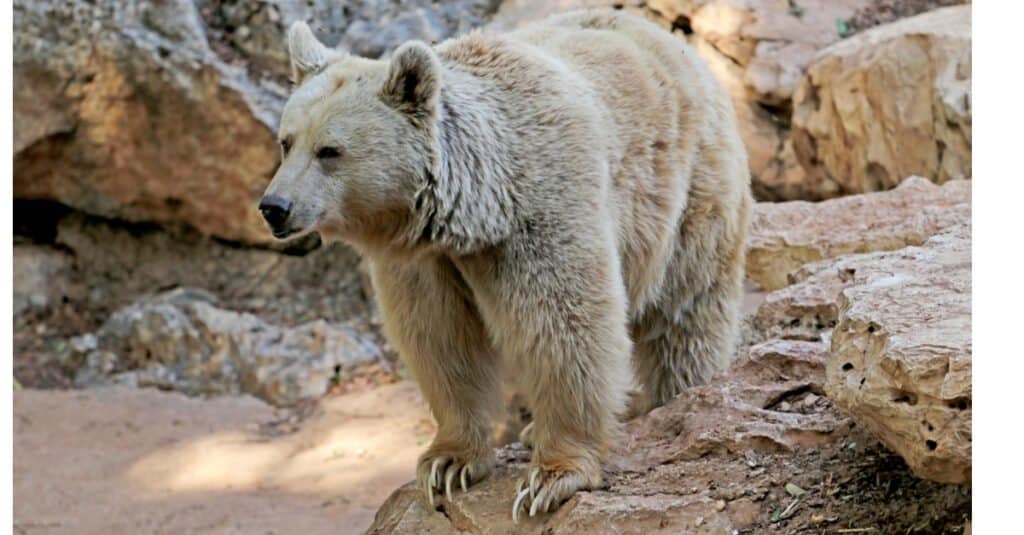
“Pizzly Bears” are grizzly-polar bear offspring. These hybrids have uniquely combined characteristics of grizzlies and polar bears from both of their parents.
©Yurii 1111/Shutterstock.com
A Pizzly Bear is the hybrid offspring of a polar bear and a grizzly bear. Technically, “Pizzly” isn’t the “official” name of these unique hybrids, but just one of the many possible terms. They do not have an official name, possibly because there have only been a few produced so far.
However, currently, these bear hybrids are commonly called grizzly-polar bear hybrids, grolar bears, pizzly bears, and grizzlars.
Wildlife officials in Canada suggested the Inuit name “Nanulak” for these grizzly-polar bear hybrids. “Nanuk” is the Inuit word for the polar bear, and “aklak” is the word for grizzly bear, so it seems like a fitting name.
Other scientists suggested putting the sire’s name first (as they do for many other hybrid animals). So, in that case, we would call a hybrid grizzly-polar bear one of two names:
- Pizzly Bear or a Nanulak (the hybrid offspring of a male polar bear and a female grizzly bear)
- Grolar Bear or Aknuk (the hybrid offspring of a male grizzly bear and a female polar bear)
Over the past several years more of these grizzly-bear hybrids have been popping up in the wild. However, the very first hybrids were actually discovered as captive-bred bears born in zoos.
The Discovery of the Pizzly Bear
A hunter from Idaho by the name of Jim Martell apparently shot a polar-grizzly hybrid near Sachs Harbor on Banks Island in the Northwest Territories on April 16th, 2006. Jim and his local guide had been hunting for polar bears and killed the creature believing it to be your average polar bear.
However, after noticing that it had a different type of white, thick, and creamy fur with longer claws, they panicked believing it to be a grizzly. Grizzlies are illegal to hunt and could face a possible fine of $1,000 CAD or even jail time.
After some research and a DNA test, scientists concluded that the genetics were that of a polar bear and grizzly hybrid.
Additional discoveries include:
The First “Pizzly Bear”
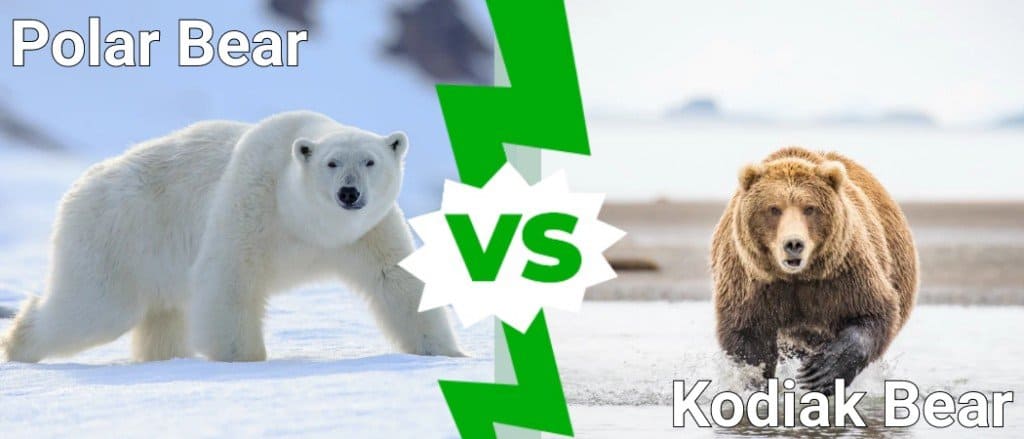
Back in the 1930s, it was common for zoos to house different but related species together in one enclosure, which is what they did at the National Zoo in Washington D.C. in 1935. Two polar bears—Snowy (male) and Marion (female)—lived together with a female Kodiak bear named Ramona.
The three bears seemed to get along just fine, and no one thought that a brown bear and a polar bear could mate across species. So, you can imagine how shocked the zookeepers were when they discovered that Ramona was pregnant! The female Kodiak bear gave birth to two hybrid cubs.
The following year Ramona once again gave birth to Snowy’s babies. Three of the four unique hybrid cubs survived: Fridgee, Taku, and Pokodiak. The cubs were covered with brown fur and looked much more like brown bears than polar bears. Another hybrid cub, Willie, was born a few years later in 1939.
Unlike many of the previous cubs, Willie grew into a healthy adult, weighing nearly 1,4000 pounds!
A Second-Generation Surprise: Double Hybrid Pizzly Bears
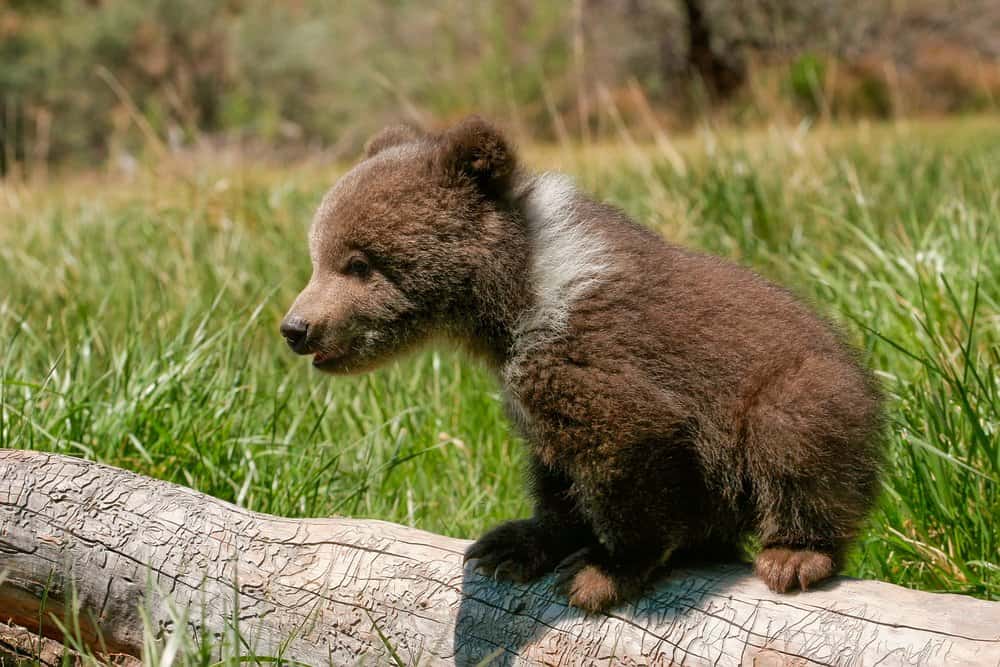
The hybrid bear cub, Gene, arrived at the National Zoo around the same time as another bear his age: Smokey, the National Parks ‘spokesbear’, and the two often played together.
©Don Mammoser/Shutterstock.com
Ramona and Snowy’s unexpected romance proved that it was possible for a brown bear and a polar bear to mate and produce hybrid cubs. However, many hybrid species cannot reproduce beyond this first generation. For example, mules—the hybrid offspring of a donkey and a horse—are sterile from birth and cannot reproduce. Thus for many years scientists believed pizzly bears could not reproduce either.
However, the bears would continue to confuse and shock scientist for many years to come. Two of the National Zoo’s hybrid bears, Pokodiak and Willie, mated and produced two of their own double hybrid cubs in 1950. The cubs were called “double hybrids” since both of their parents were hybrids themselves.
Sadly, only one of Pokodiak’s double-hybrid cubs survived. When he was three months old, the surviving cub–named Gene (short for “Genetics”)—made his public debut in front of more than 30,000 excited zoo visitors. He was also featured in The Journal of Heredity in February of 1950.
What Do Pizzly Bears Look Like?
By 2009, at least 17 different hybrid grizzly-polar bears had been born in zoos across the world. Many hybrid bears appear to retain the all-brown fur coat of their grizzly-bear parent, while others have lighter brown fur. Some even have white or brown markings or patches across their bodies.
However, fur color is not the best-identifying characteristic, since occasionally there are also naturally-born “blonde” grizzly bears in the wild.
Common Characteristics of Pizzly Bears
Besides hair color, there are several other common characteristics that have been observed in hybrid pizzly bears:
- Hybrid pizzly bears are usually smaller than polar bears but much larger than the average grizzly bear.
- Pizzly bears have long necks like polar bears. However, their heads are a blend between a lean polar bear head and a broad grizzly bear head.
- Pizzly bears often have small shoulder humps like grizzly bears.
- Hybrid pizzly bears have visible tails like polar bears (grizzly bears have tails, but they are not very perceptible).
- The hair follicles of pizzly bears have a unique hollow pattern, which shows a blend of the two parent species. Polar bears have hollow hair follicles. On the other hand, grizzly bears have solid hair, with only a few small sections that are hollow.
- Pizzly bears have some hair on the soles of their feet. This is another interesting blend of the two different parent species. Polar bears have hairy feet, and their soles are completely covered in fur. Grizzly bears, on the other hand, do not have any hair on the soles of their feet.
Pizzly Bear Behavior
In addition to their appearance, pizzly bear cubs—even those that look a lot like grizzly bears—behave more like polar bears. When given toys, for example, pizzly bear cubs use both legs to stamp on them. This is the same action that wild polar bears use to break the ice. The cubs also grab things in their mouth and hurl them side to side as wild polar bears do with their prey. Grizzly bear cubs, on the other hand, do not display either of these behaviors. Furthermore, pizzly bear cubs often lay on their bellies with their rear legs splayed out behind them in a “sploot”, just like polar bears do!
Pizzly Bears in the Wild
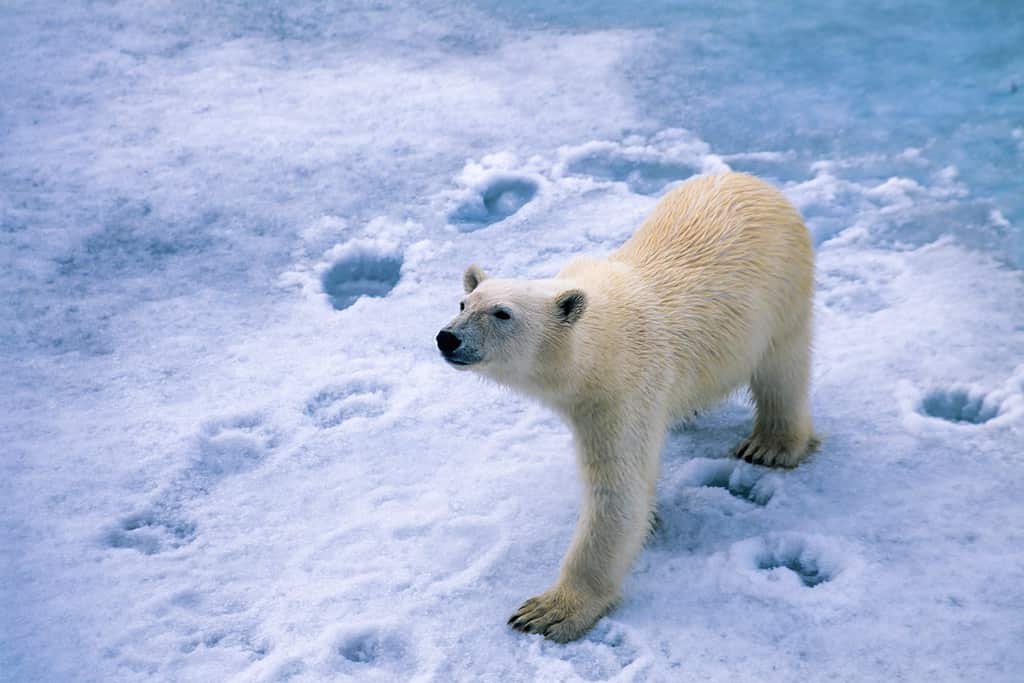
The first pizzly bear found in the wild looked a lot like a polar bear from a distance. This unique hybrid, however, had a few unique grizzly bear characteristics, like brown patches of fur and long claws.
©Lasse Johansson/Shutterstock.com
While there have been several pizzly bear cubs born in captivity over the years, sadly only a handful of them survived to adulthood, apparently due to their genetic makeup. This is why it is even more perplexing that there are adult wild pizzly bears roaming the northern regions of Canada today.
Although there have been many possible sightings of pizzly bears in the wild, there was no physical evidence of one until 2006. That year, Jim Martell thought he had shot a polar bear until officials noticed that the bear was white, it had a humped back, and its claws were much too long for the average polar bear. The bear also had a shallow face with brown fur around its eyes and nose.
Wildlife Genetics International performed a DNA test, and much to their surprise, it confirmed that Martell’s bear was only half polar bear. It turns out that Martell’s” polar bear” was actually a hybrid pizzly bear, the product of a male grizzly bear and a female polar bear! This was the first time a hybrid grizzly-polar bear had been officially confirmed in the wild.
Wild “Double Hybrid” Pizzly Bears

Male grizzly bears in Canada have been mating with female polar bears and hybrid pizzly bears for the past several years.
©Tony Campbell/Shutterstock.com
In the next several years following Martell’s discovery, more pizzly bear hybrids began showing up in the wild. Even more surprising, however, was that a few of the new bears were “double-hybrids”! In 2010 an Inuvialuit hunter thought that he had shot a polar bear, but it turned out to be only 25% polar bear. The bear was mostly white, but it had light brown fur on its lower legs and paws, a broader grizzly bear-like head, and long claws. DNA testing confirmed that the bear was the offspring of a male grizzly bear and a first-generation female grizzly-polar bear hybrid!
Today, at least eight different hybrid pizzly bears have been officially confirmed in the wild. DNA testing showed four of these bears were first generation (F1) pizzly bears, offspring from a grizzly bear, and a polar bear. Interestingly, a single female polar bear gave birth to all four of these F1 hybrids. The mother polar bear had mated with two different male grizzly bears. However, she had mated with one of the male grizzlies twice, each time during a different year. Two of her cubs were full genetic siblings, even though they were born a whole three years apart.
The other four wild hybrid bears were second-generation pizzly bears, which means that their DNA is 75% grizzly, and 25% polar bear. It turns out that their mother was one of the original four wild F1 hybrid pizzly bears, and had mated with two male grizzly bears.
Why Are Polar Bears and Grizzly Bears Mating?

Pizzly Bears are rare because grizzlies and polar bears do not encounter each other often. Polar bears live in the icy waters of the Arctic and spend most of their time in the water or on the sea ice hunting for food. Grizzly bears on the other hand, live in warmer regions and spend most of their time on land.
©iStock.com/avstraliavasin
Okay, so we know it’s possible for grizzly bears and polar bears to mate and reproduce fertile offspring. But now the question is, why are they doing it? Since there are only a handful of officially confirmed pizzly bears in the wild, more research needs to be done to better understand unique hybrid animals. However, there are many potential reasons why grizzly bears and polar bears are beginning to reproduce together.
Possible Theories Behind the Recent Increase of Pizzly Bears
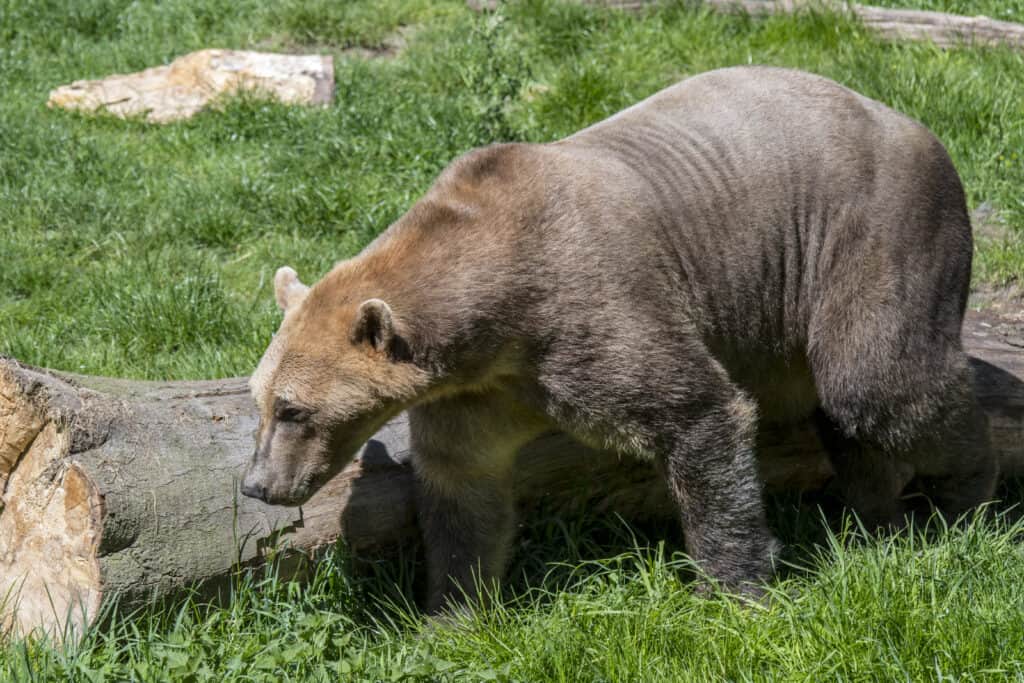
Grolar Bears or Pizzly Bears each has their own unique appearance, depending on which characteristics physically manifest from their two different parents’ species.
©iStock.com/Philippe Clement
The habitats of grizzly bears and polar bears do not usually overlap, and when the two species do encounter one another, they usually show aggression. However, the continually warming climate appears to be forcing both species to adapt to new environments and habits.
As the sea ice continues to shrink, tundra regions are growing larger, allowing grizzly bears to move further north in search of food. Grizzly bears in Siberia and the Canadian Arctic have even been observed venturing further out onto pack ice.
As arctic ice continues to melt and shrink, polar bears must also travel further in search of food, and the previously separate ranges of polar bears and grizzly bears are beginning to overlap. In fact, both polar bears and grizzly bears have been seen occupying the same areas as they feed on bowhead whale carcasses. These accidental meetups also provide the chance for opportunistic mating between the two species.
Ancient Grizzly-Polar Bear Hybrids
Although it is rare and seemingly strange for grizzly bears and polar bears to mate, their genetics are not as different as you may imagine. In fact, the grizzly bear, or brown bear, was actually the precursor to the polar bear. Polar bears evolved from grizzly bears as they moved into the harsh Arctic regions. Recent genomic analyses show that during the Pleistocene, genes flowed from polar bears into grizzly bears in several different areas. In fact, many of the bears analyzed from Alaska’s Alexander Archipelago have mitochondrial DNA inherited from their maternal ancestors that entirely comes from polar bears! Over 90% of their nuclear genome, however, belongs to grizzly bears.
What Do Hybrid Pizzly Bears Mean for the Future of the Two Species?
Since there are few hybrid pizzly bears seen in the wild so far, it is hard to know for sure what will happen in the future. In general, however, hybrid animals are not usually as well-adapted as their parent species. The original parent species typically have their own unique adaptations that are specialized for their respective environments. For example, polar bears are marine animals that spend much of their time in the water. They also have a highly specialized, meat-only diet. Grizzly bears, on the other hand, live primarily on land and eat both plants and meat.
However, as climate change continues to alter the artic ice and tundra regions, it is possible that these grizzly-polar bear hybrids might be better adapted to new environments. Perhaps a pizzly bear will have a less specialized diet than a polar bear, for example, so it could eat a wider range of different foods. But really, only time will tell for certain, so scientists are continually monitoring and studying pizzly bears in the wild. As the climate continues to warm, more grizzlies may continue moving north, and we might see even more hybrid pizzly bears in the near future.
10 Facts About Pizzly Bears
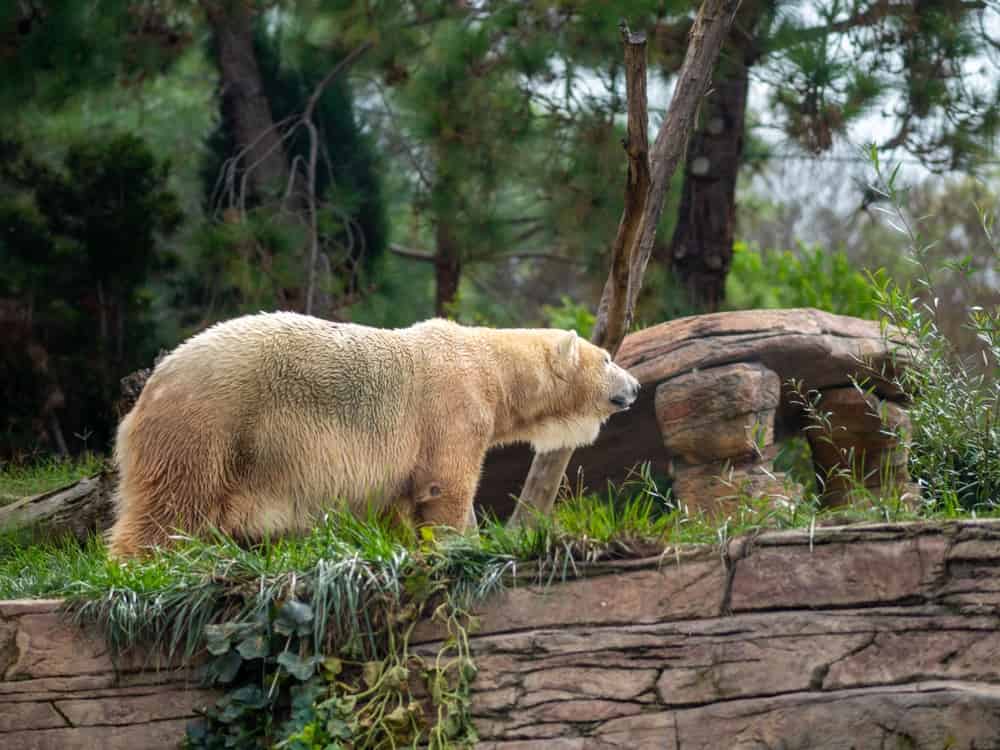
Pizzly bears have the distinctive white fur of polar bears and the brown fur of grizzly bears.
©Wirestock Creators/Shutterstock.com
Pizzly bears, also known as grolar bears, are a unique hybrid species resulting from the mating of polar bears and grizzly bears. These rare animals are found in the Arctic regions of northern Canada and Greenland, where they have adapted to life in the harsh, cold environments of the far north.
With that said, here are 10 facts about pizzly bears:
- Pizzly bears, also known as grolar bears, are a hybrid species of bears that are the result of mating between polar bears and grizzly bears.
- They are native to the Arctic regions and are primarily found in northern Canada and Greenland.
- Pizzly bears have a unique appearance, with characteristics of both parent species. They have the distinctive white fur of polar bears and the brown fur of grizzly bears.
- They are omnivores and feed on a variety of foods, including fish, berries, and carrion.
- Pizzly bears are larger and stronger than either parent species, making them highly effective predators in their Arctic habitats.
- They are well adapted to life in the Arctic, with thick fur and a layer of fat to insulate them from the cold.
- Pizzly bears are able to swim long distances and are skilled hunters of fish, which is a key food source for them in the Arctic.
- Although pizzly bears are not currently considered a distinct species, they are considered to be a subpopulation of either polar bears or grizzly bears.
- The number of pizzly bears is not well known, but it is believed that their populations are increasing as the ranges of polar bears and grizzly bears overlap due to climate change.
- Pizzly bears are protected by the Convention on International Trade in Endangered Species of Wild Fauna and Flora (CITES) and are listed as a species of special concern by the IUCN Red List. Conservation efforts are underway to protect both pizzly bears and their parent species.
With their distinctive appearance, powerful strength, and omnivorous diet, pizzly bears have become a fascinating subject of study for wildlife researchers and conservationists alike.
The photo featured at the top of this post is © iStock.com/Philippe Clement
Sources
- Journal of Heredity, Available here: https://academic.oup.com/jhered/article-abstract/41/2/34/889525?redirectedFrom=fulltext
- Wildlife Genetics International, Available here: http://www.wildlifegenetics.ca/
- North American Nature, Available here: https://northamericannature.com/what-is-a-pizzly-bear/
- Arctic Institute of North America, Available here: https://journalhosting.ucalgary.ca/index.php/arctic/article/view/67681
Thank you for reading! Have some feedback for us? Contact the AZ Animals editorial team.






